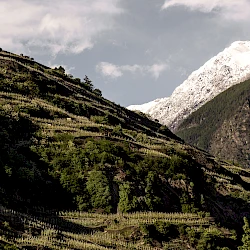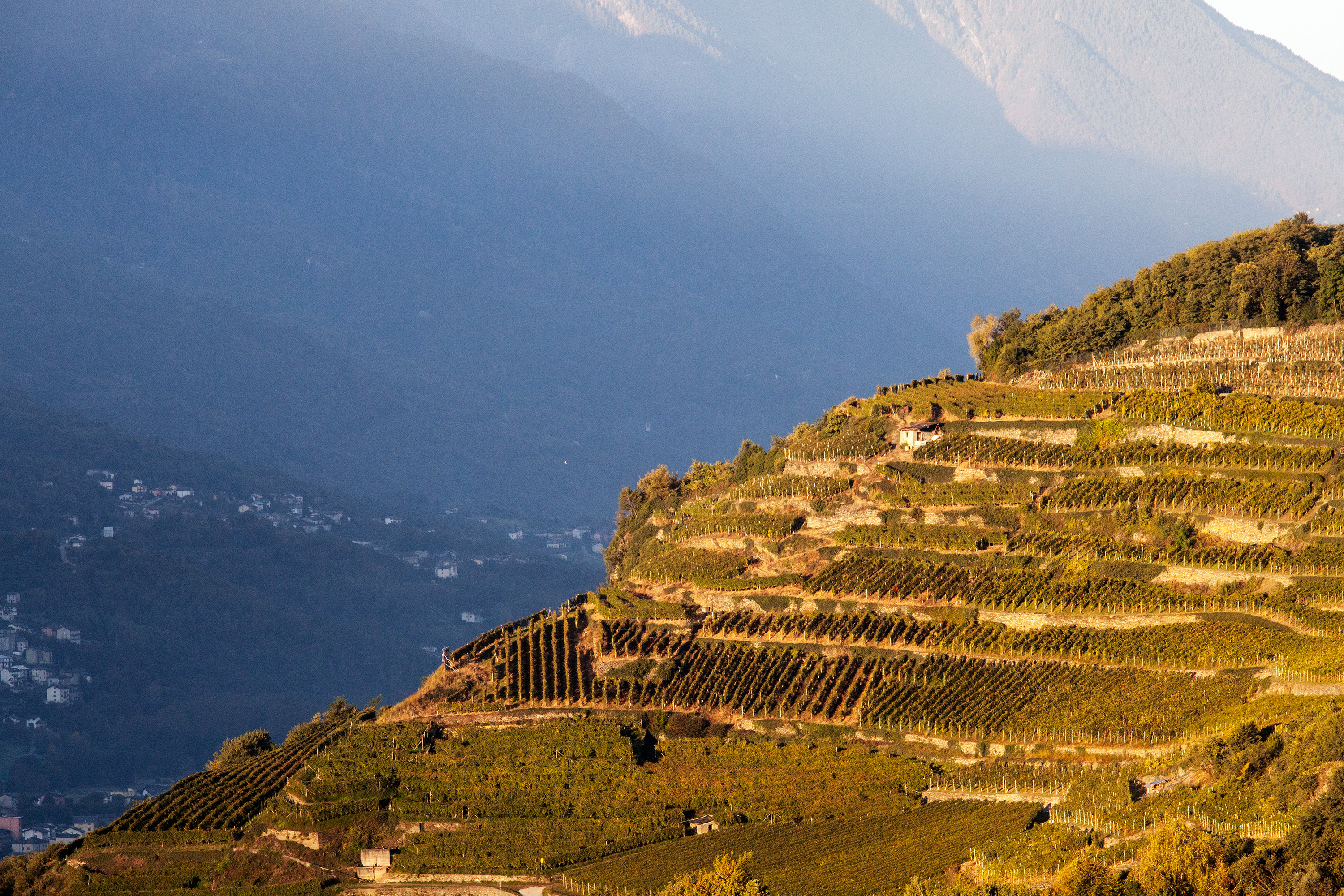
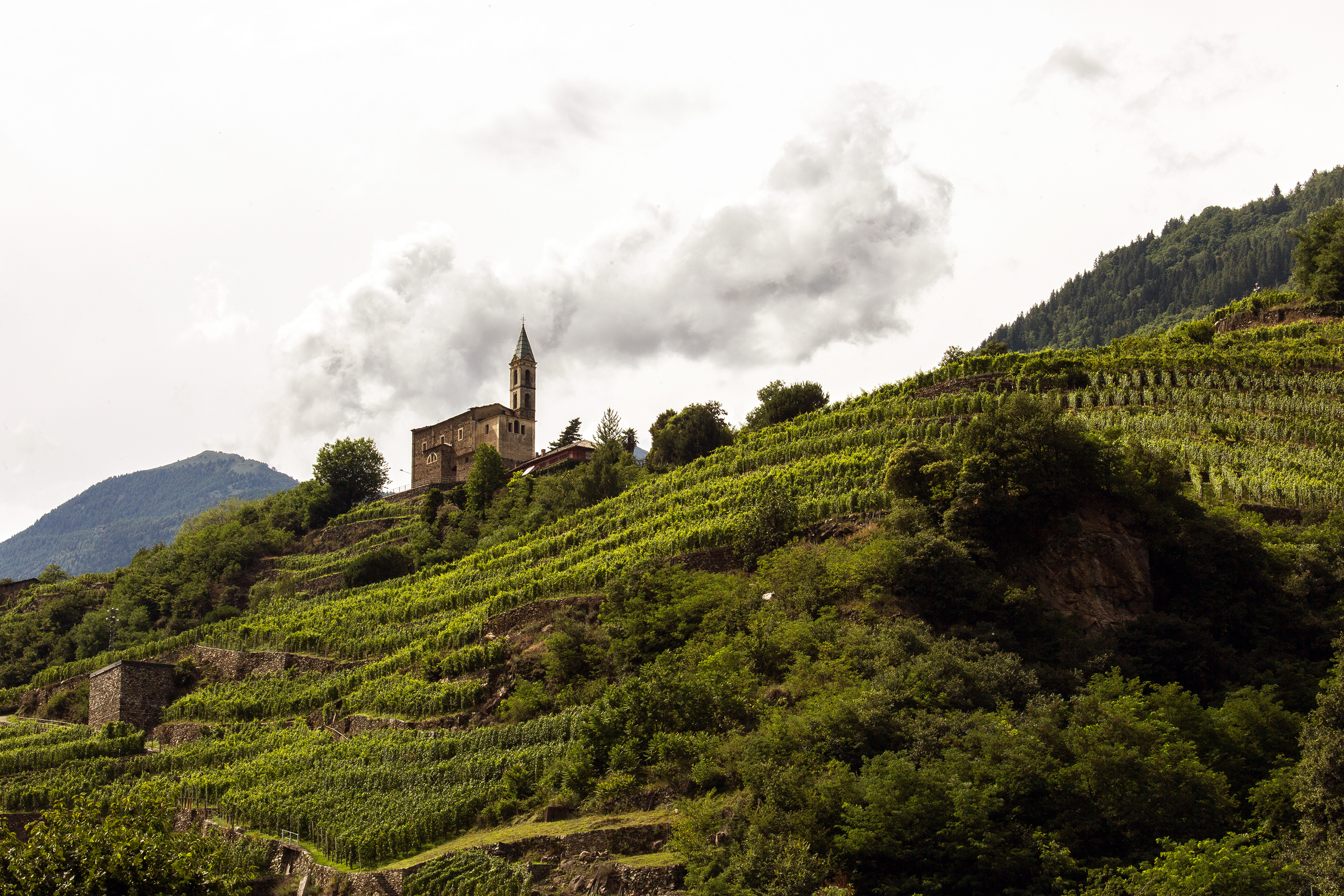
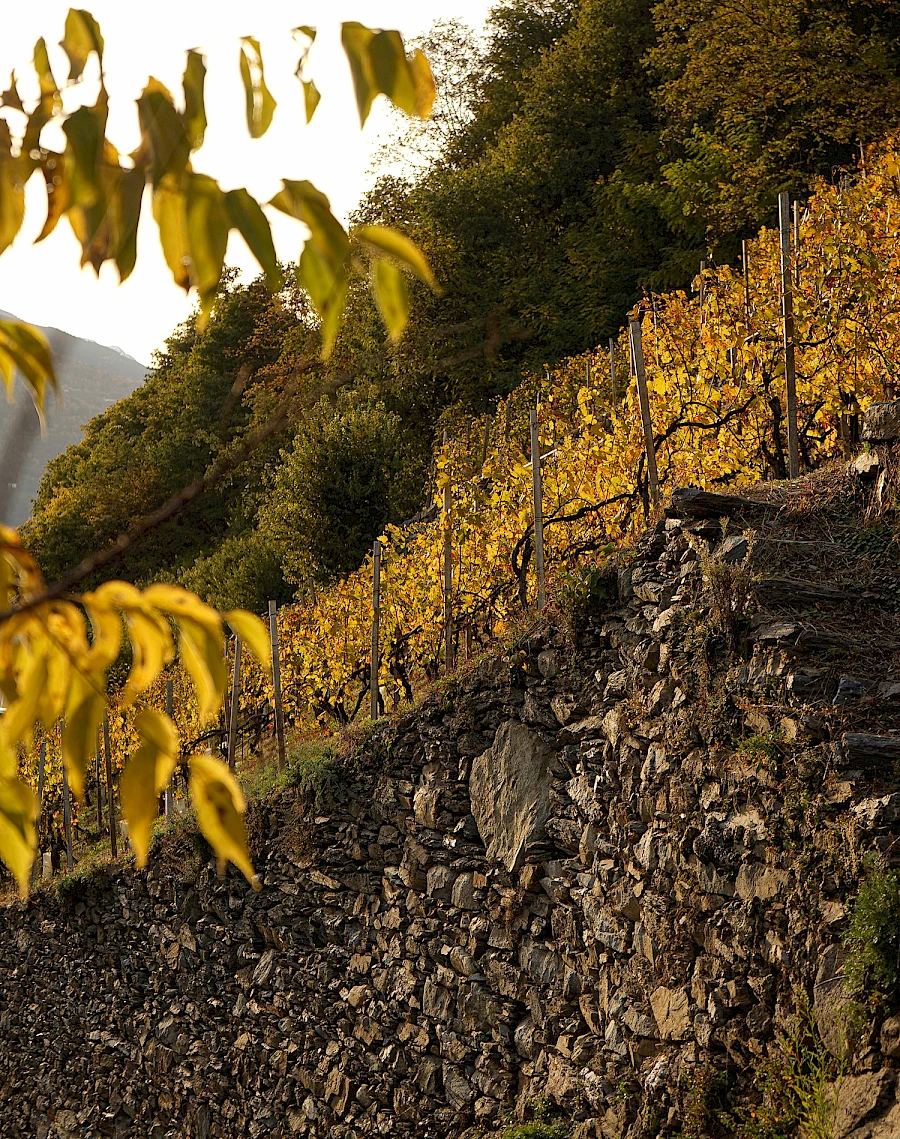
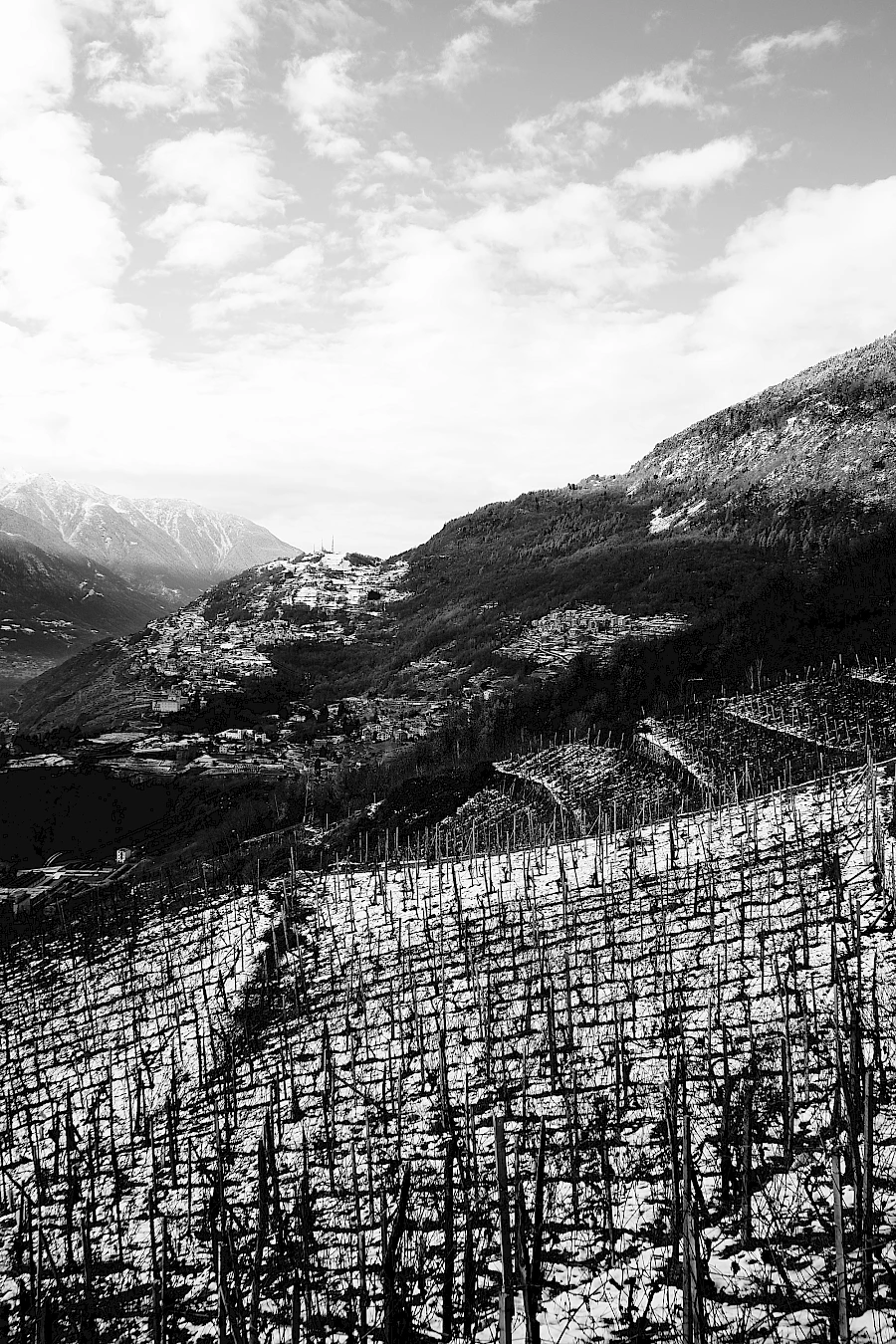
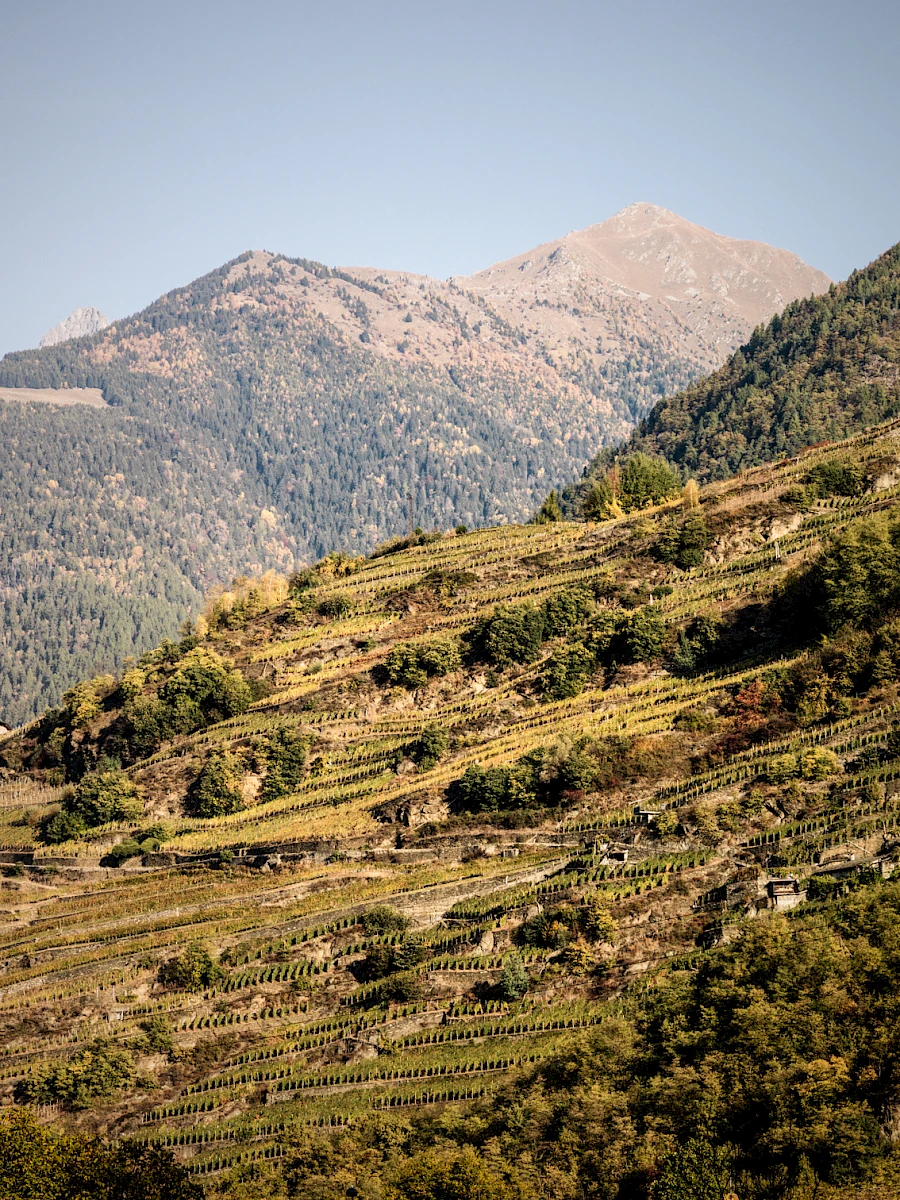
Along the lined walls is where the History of Valtellina is rooted. The dry stone walls on the Rhaetian mountainside are true pieces of rural engineering and represent an historical model of anthropization of the alpine landscape. An example of affinity between man and mountain and an endless relationship between the wild and the persistency of the people who live it.

There are 820 cultivated hectares along the rocky slopes of the Rhaetian mountainside, from West to East (from Buglio in Monte to Tirano), from the bottom to the top (from 300 metres up to nearly 800 metres of altitude).
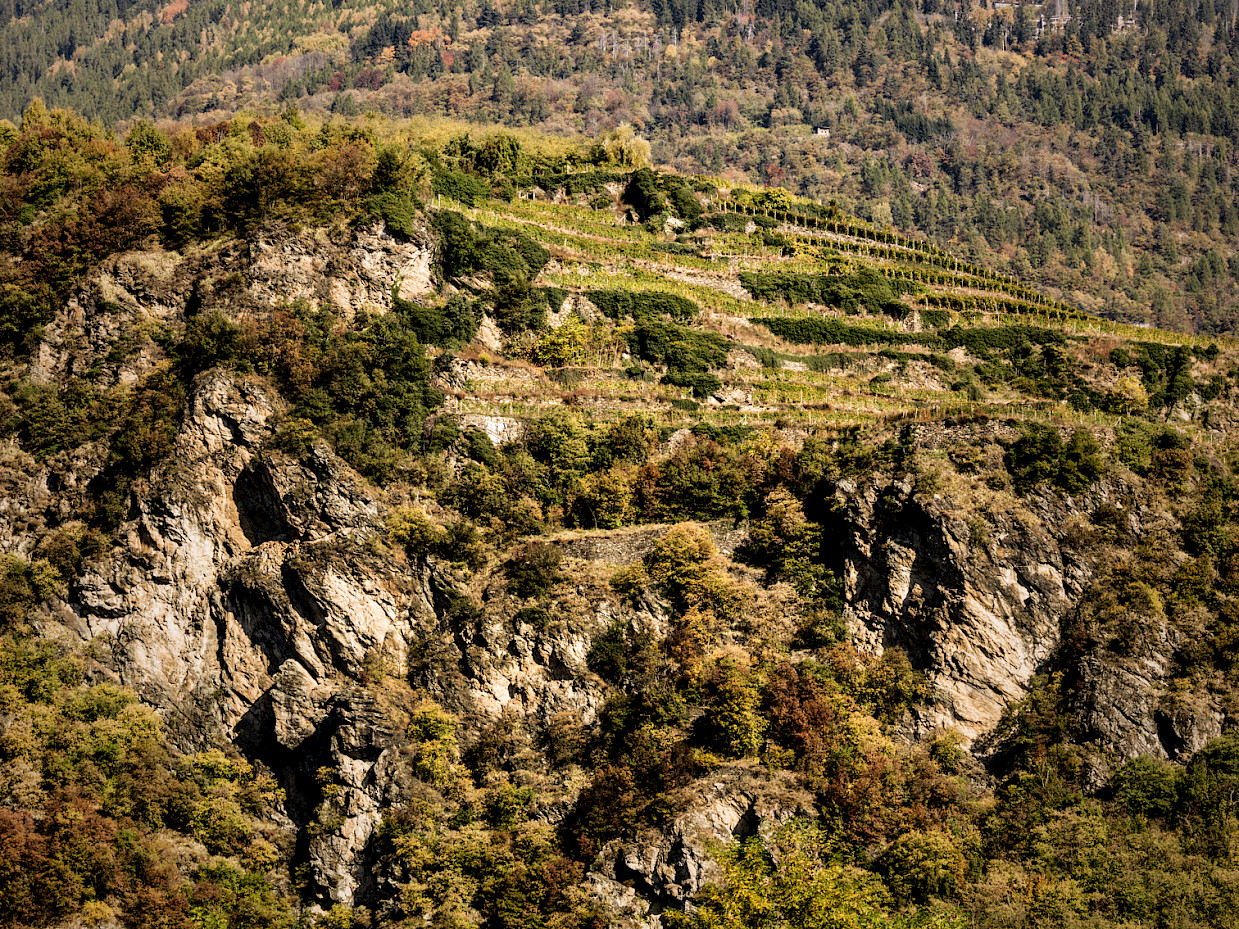
The walls welcome portions of land-often extended for just a few decines of metres- in which the vine is firmly rooted inside the rock. The rock supports the terrace, the vine supports the rock: the farmer is the protagonist of this mosaic of interconnexions with the territory, the landscape, the beauty and the wine.
Terracing in Valtellina it’s an essential part of the “wine system” of which it is the essence, the identity. An identity that finds its roots within Nebbiolo, a great local grape.
Nebbiolo talks with the mountain, with the winds, with the poor soil, with the heat of the walls and the microclimatic variations, transmitting energy and personality to the wines.
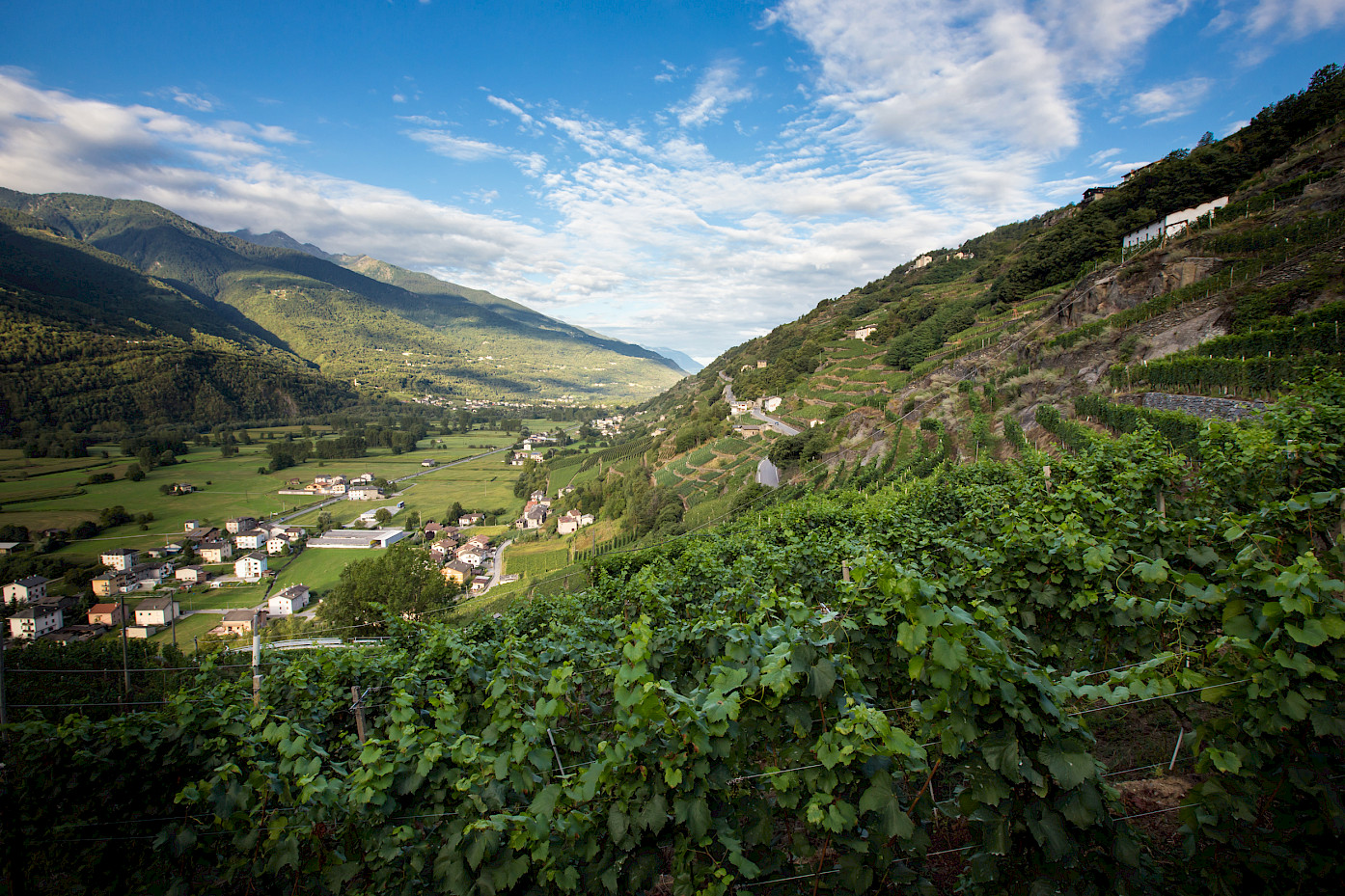
Valtellina terraced vineyard it’s a stunning example generated from the need to find arable areas, small pieces of land throughout the mountain. An heritage of history and knowledge needy of care and conservation. Generations of farmers have shaped the territory to their needs, but always with care.
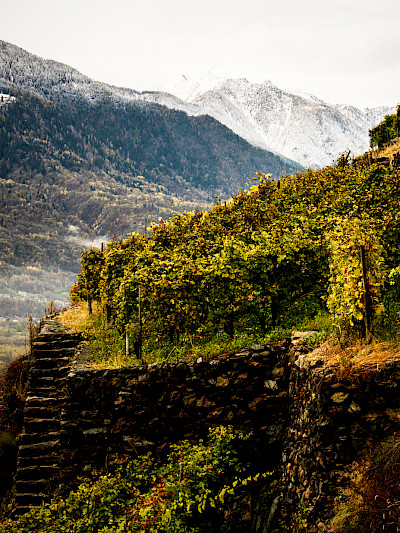 The present and the future of Valtellina it’s in the daily work of lots of farmers and producers which interact with an extraordinary heritage characterized by dry stone walls, steep paths, small steps, and rural artifacts built with difficulty and sacrifice.
The present and the future of Valtellina it’s in the daily work of lots of farmers and producers which interact with an extraordinary heritage characterized by dry stone walls, steep paths, small steps, and rural artifacts built with difficulty and sacrifice.
Nowadays farmers and producers create and recreate value, they support and look after the landscape, rescuing it from abandonment.
And it’s exactly for this central, cultural, environmental and aesthetic role that the terraces located on the Valtellina Rhaetian mountainside were recognized as “Rural historic landscape. A title that completes the recognition obtained in 2018 “The Art of dry stone walls” as Intangible Cultural Heritage of Humanity.
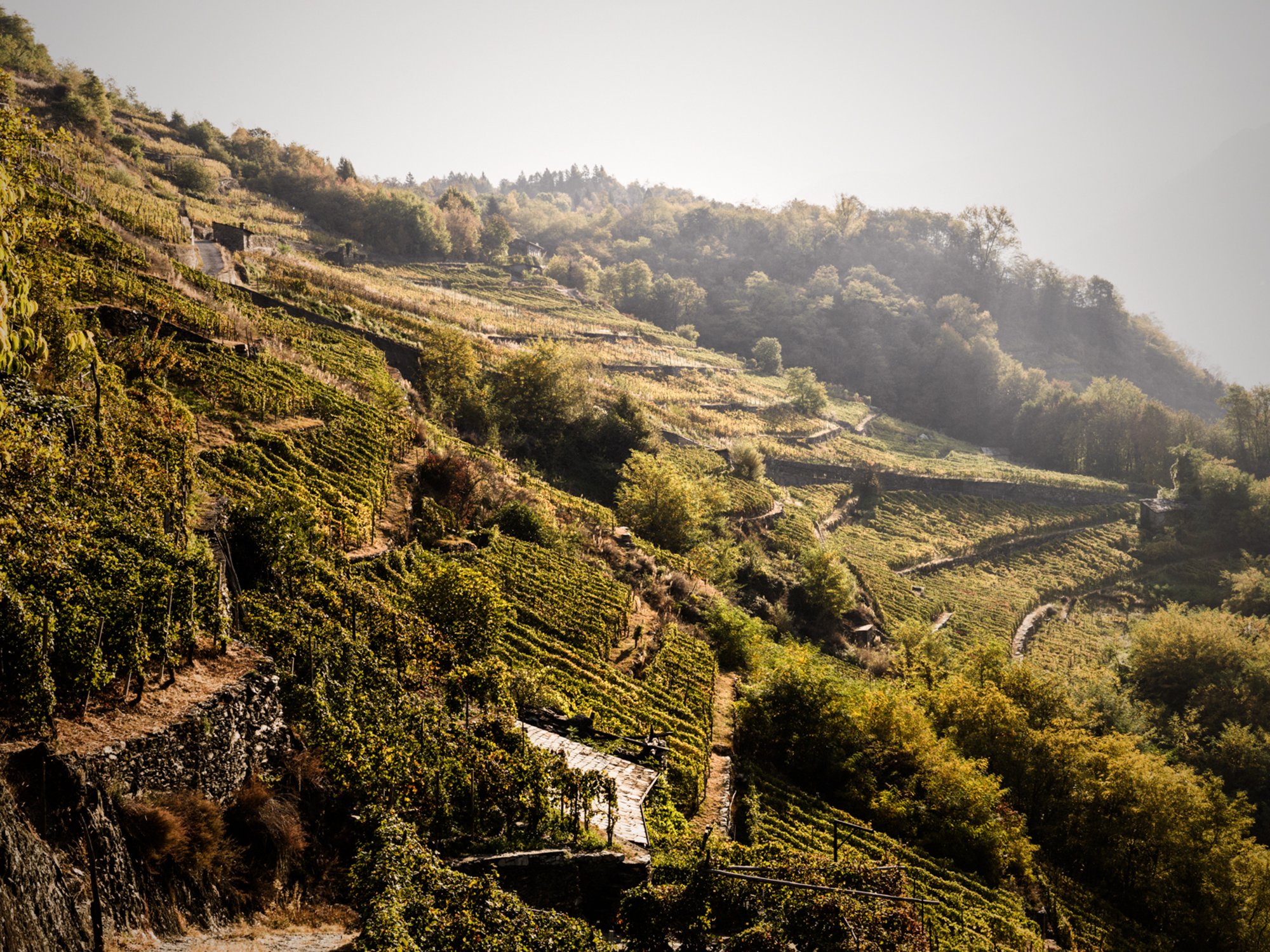
Thanks to the commitment of Provinea foundation, the Rhaetian mountainside of Valtellina obtained the recognition as Rural Historic Landscape.
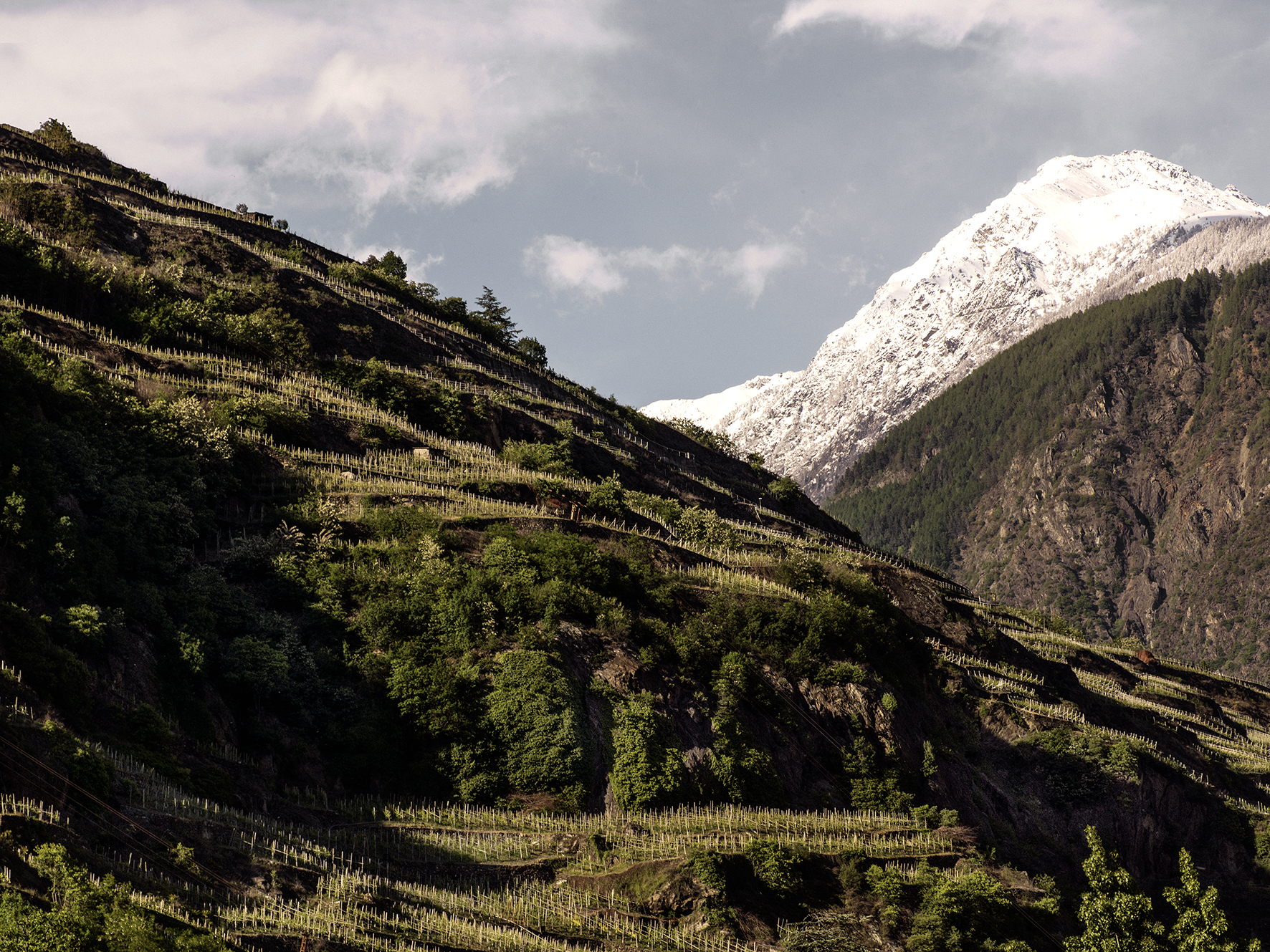
Valtellina, Nebbiolo from the Alps
